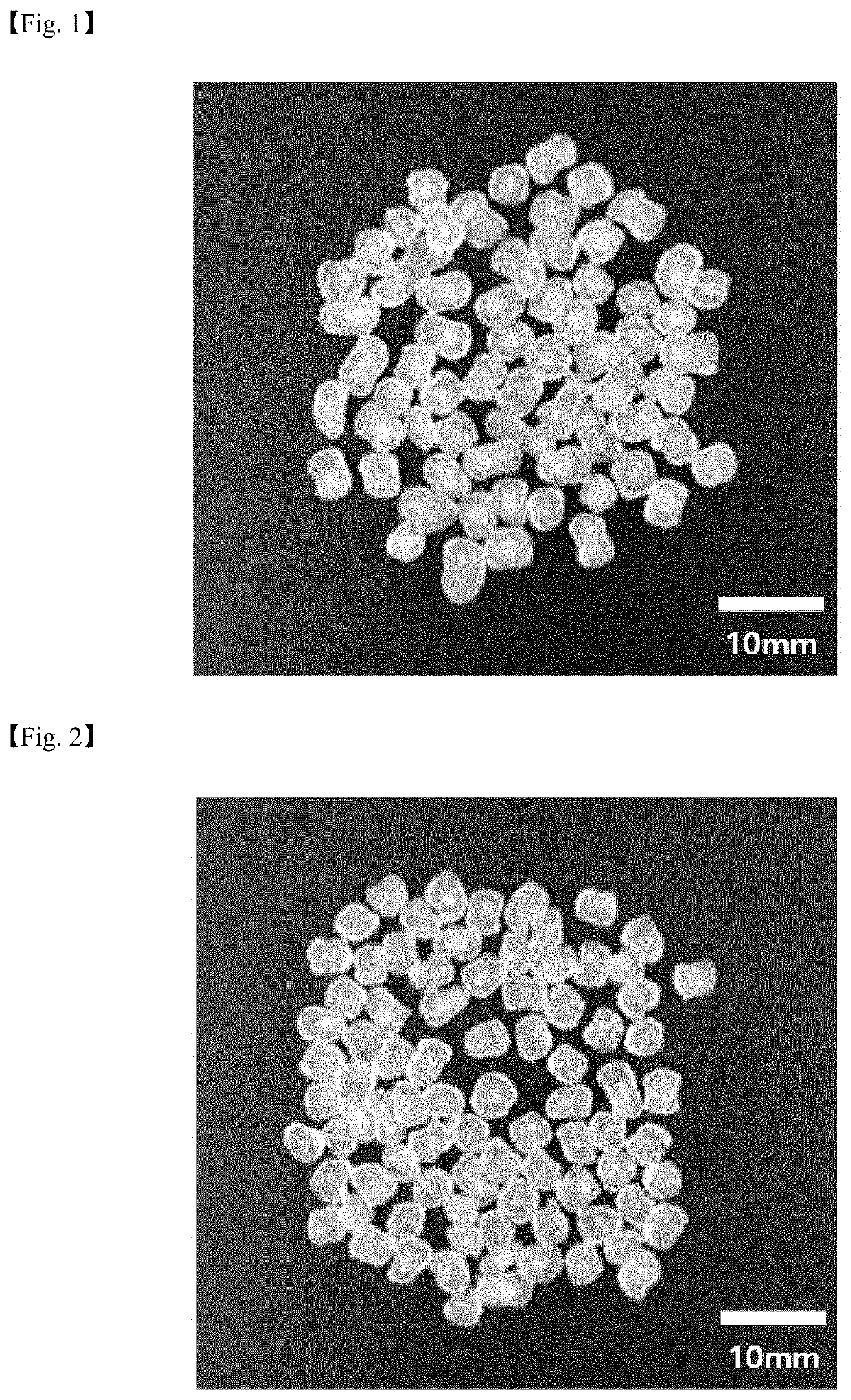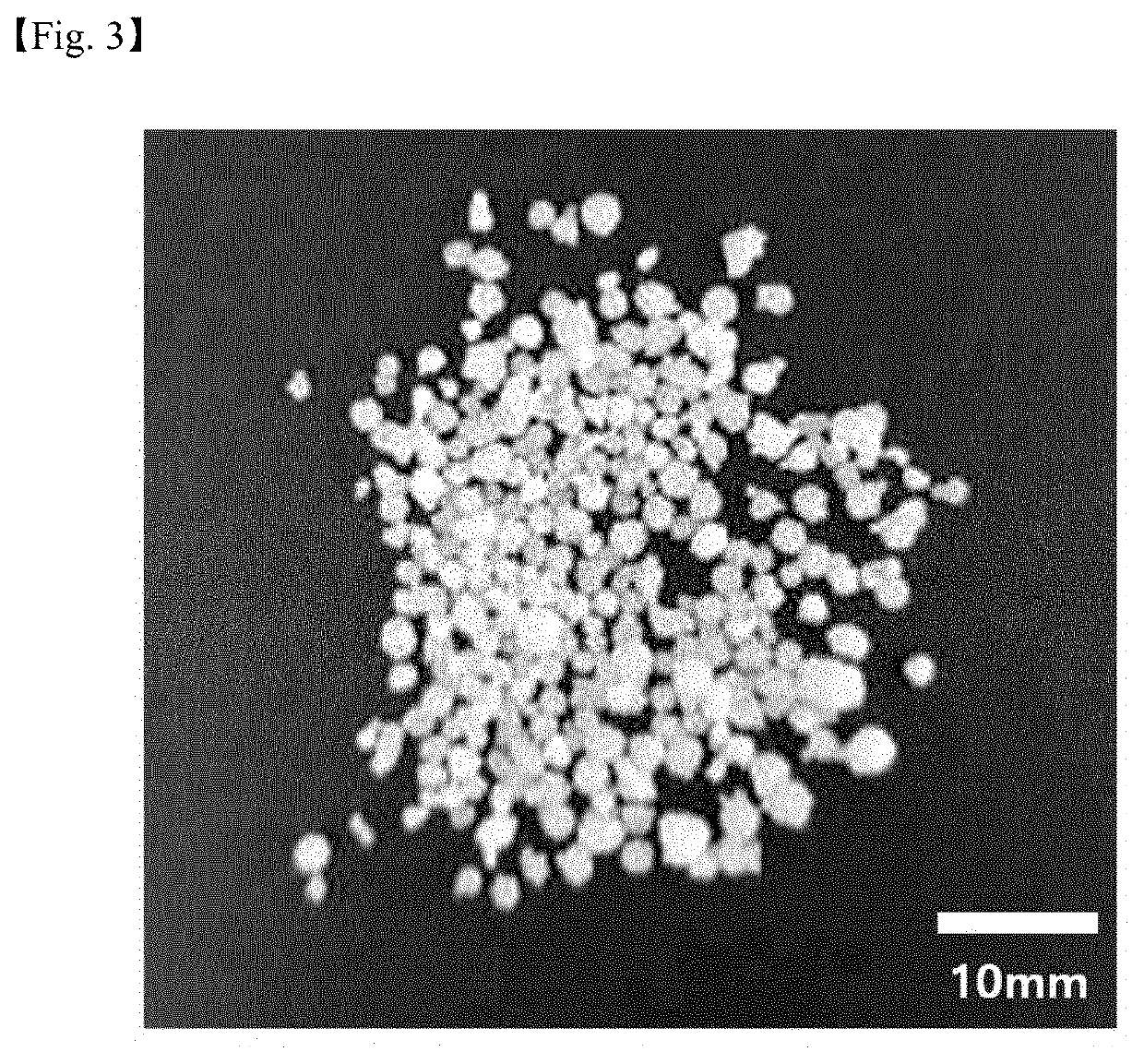Pellet-Type Polypropylene Resin Composition and Method for Preparing the Same
- Summary
- Abstract
- Description
- Claims
- Application Information
AI Technical Summary
Benefits of technology
Problems solved by technology
Method used
Image
Examples
synthesis example 1
lyst
[0171]3 g of silica was previously weighed in a Schlenk Flask, and then, 52 mmol of methylaluminoxane(MAO) was put, and they were reacted at 90° C. for 24 hours. After precipitation, the upper part was removed, and the remainder was washed with toluene twice. 240 μmol of a transition metal compound(1a) of the following structure was dissolved in toluene and added to a reactor, and then, reacted at 70° C. for 5 hours. After the reaction was finished and precipitation was finished, the upper part solution was removed, and the remaining reaction product was washed with toluene, and then, washed again with hexane, and vacuum dried to obtain 5 g of a silica-supported metallocene catalyst in the form of solid particles.
synthesis example 2
lyst
[0172]A silica-supported metallocene catalyst was prepared by the same method as Synthesis Example 1, except that a transition metal compound(I) of the following structure was used instead of the transition metal compound of the Chemical Formula 1a in the Synthesis Example 1.
[0173]
preparation example 1
[0174]In the presence of the silica-supported metallocene catalyst prepared in Synthesis Example 1, under the conditions described in the following Table 1, a bulk-slurry polymerization process of propylene(C3) was conducted using continuous two loop reactors (Spheripol process) to prepare homo polypropylene.
[0175]Specifically, first, under the conditions described in the following Table 1, 1.1 g / hr of the silica-supported metallocene catalyst prepared in Synthesis Example 1 and propylene monomers(C3) were introduced in the reactor, and contacted to conduct prepolymerization (operation temperature: 20° C., polymerization degree: 100˜200, polymerization time: 4˜7 minutes). Wherein, the catalyst was introduced in the form of a 16 wt % mud catalyst mixed with oil and grease.
[0176]Subsequently, in the reactor, propylene monomers(C3), triethylaluminum(TEAL) and hydrogen gas were introduced respectively using a pump under the conditions described in the following Table 1, and polymerizati...
PUM
| Property | Measurement | Unit |
|---|---|---|
| Temperature | aaaaa | aaaaa |
| Temperature | aaaaa | aaaaa |
| Temperature | aaaaa | aaaaa |
Abstract
Description
Claims
Application Information
 Login to View More
Login to View More - R&D
- Intellectual Property
- Life Sciences
- Materials
- Tech Scout
- Unparalleled Data Quality
- Higher Quality Content
- 60% Fewer Hallucinations
Browse by: Latest US Patents, China's latest patents, Technical Efficacy Thesaurus, Application Domain, Technology Topic, Popular Technical Reports.
© 2025 PatSnap. All rights reserved.Legal|Privacy policy|Modern Slavery Act Transparency Statement|Sitemap|About US| Contact US: help@patsnap.com



